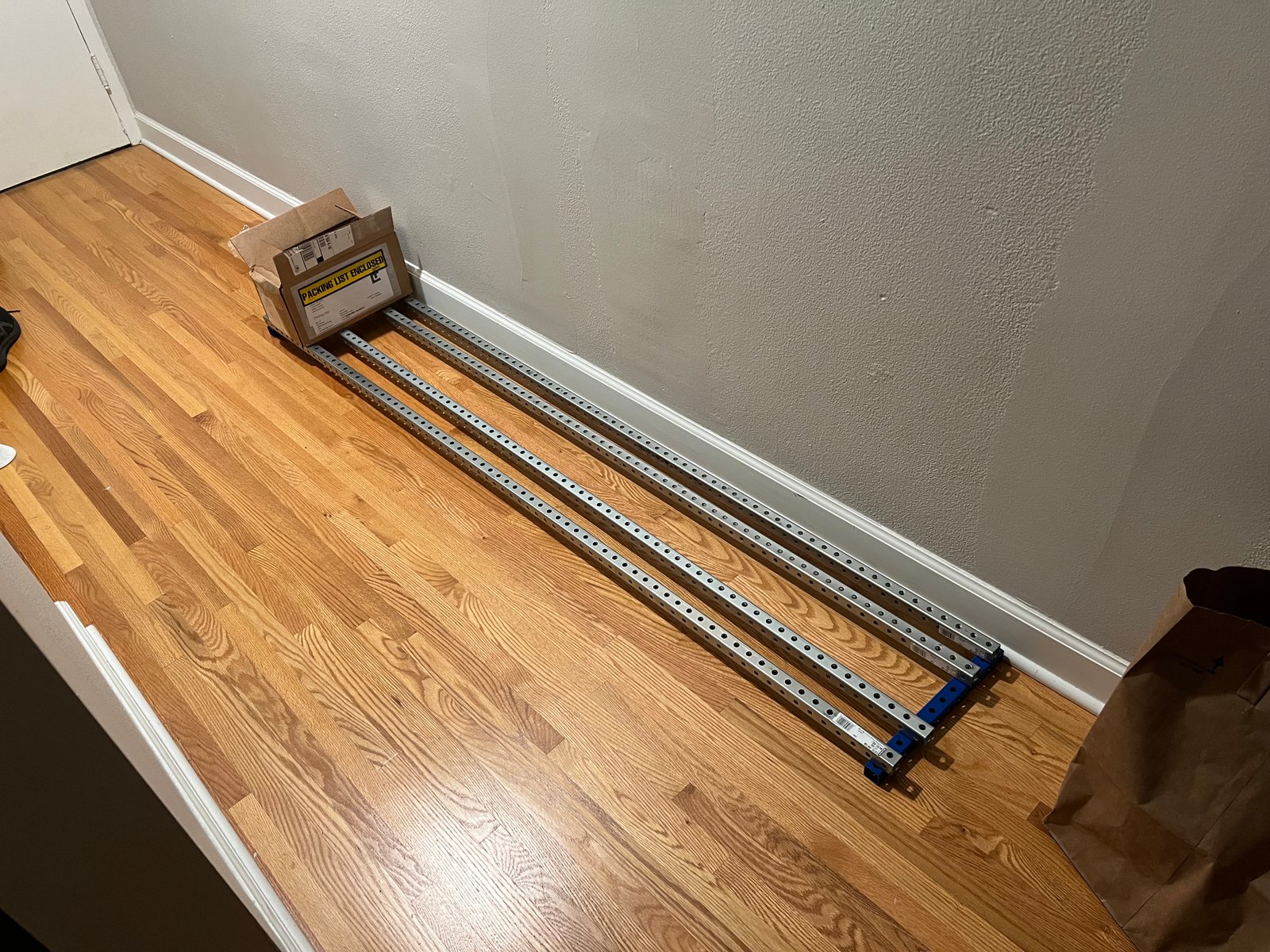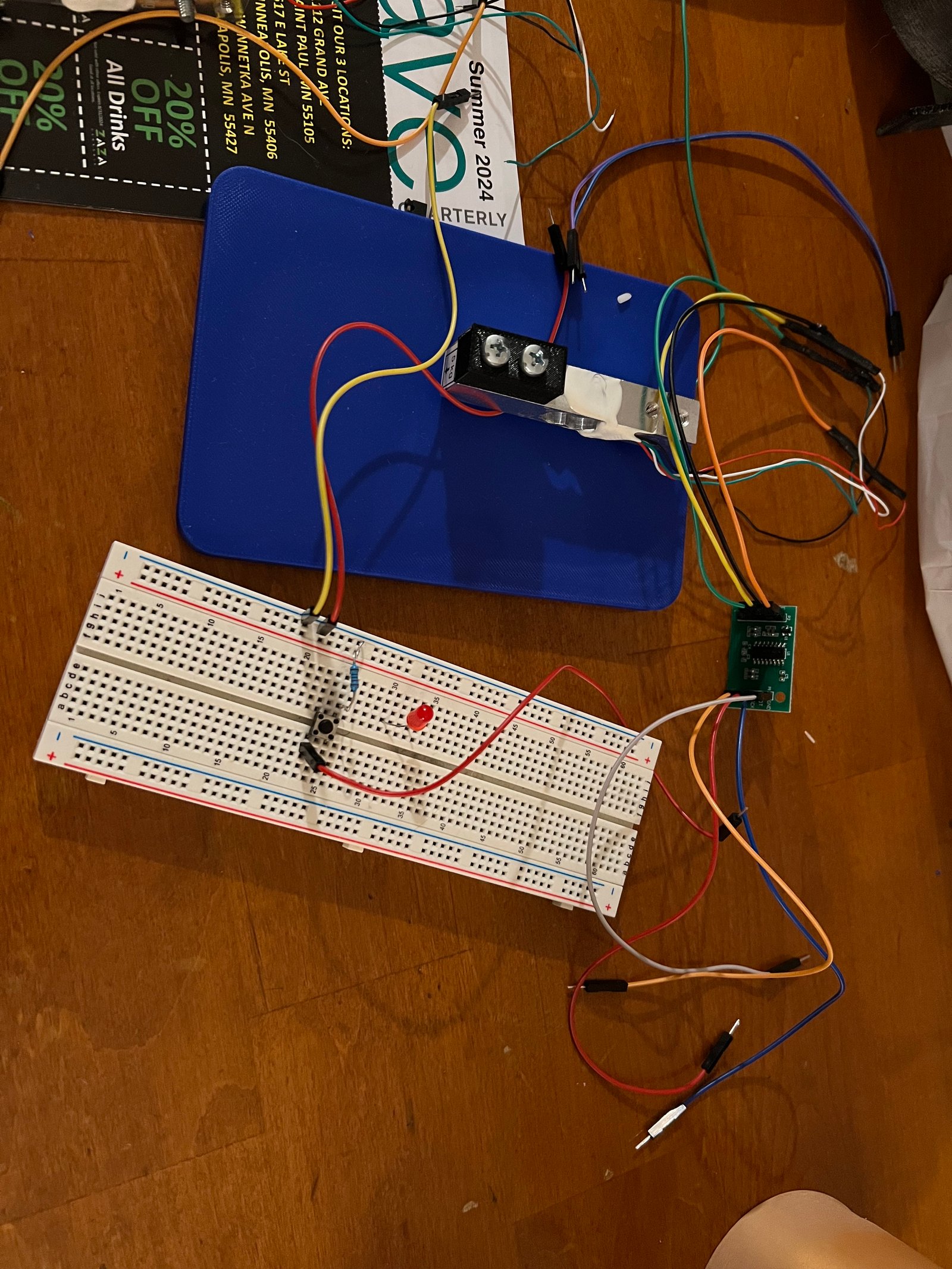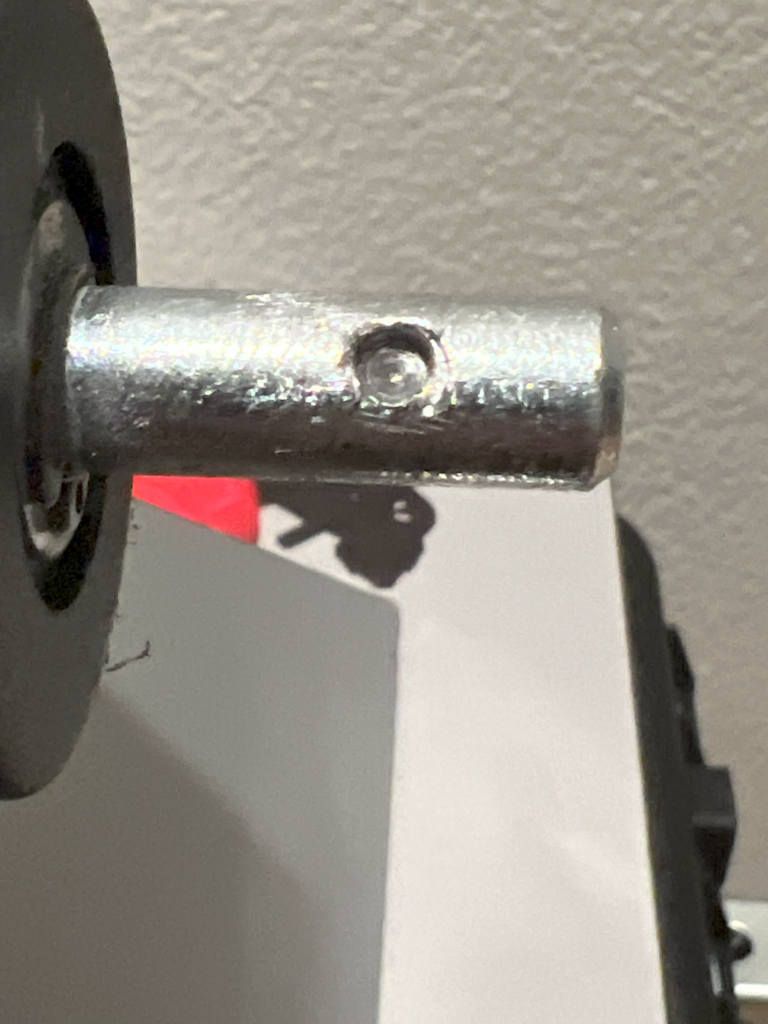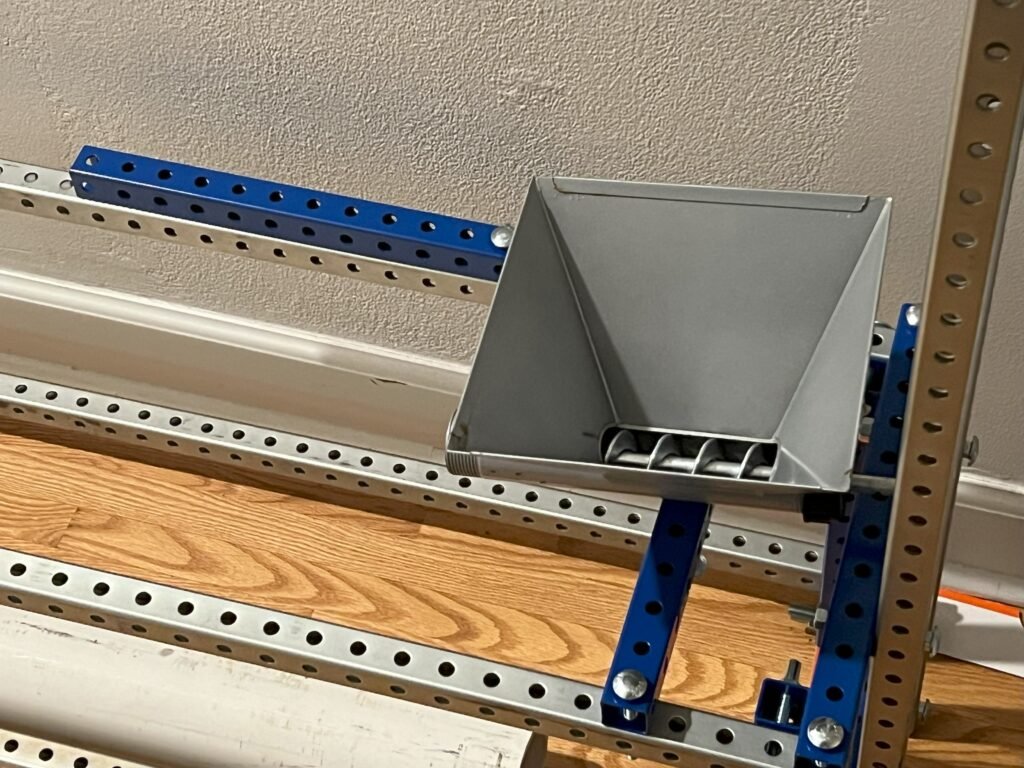Energy Bar Business Concept
I’ve always wanted to start some type of food manufacturing business. This project was an ultra-low-cost manufacturing system that’s no more than about 6 feet long, 12 inches wide, and no taller than 5 or 6 feet.
This machine was meant to process pre-mixed ingredients, package the product, and roll it into a box for shipping. I was building this to be a commercially certifiable production machine, equipped with its own internet connection for remote monitoring and the ability to start/stop the machine from anywhere.
In-Depth Info On My System
So, here’s what the frame looked like at the very beginning:


This picture below is an early prototype of the system to automatically measure dry ingredients and dump them into a mixing bowl. The silver square thing is called a load cell and it measures weight. Although I have the software/wiring figured out to do this, for the time being I’m just going to mix ingredients together by hand since it’s pretty easy to make a big batch then load the ingredients into my hopper.

My first idea for processing the ingredients into bar form was to buy this mortar hopper on
Amazon: https://a.co/d/6HdXhH3. Although it does work, both the ones I bought had some weird
non-food safe sealant on the edges and it wasn’t just made of pure welded stainless steel.
I came up with two other strategies the next day. One was texting my buddy who does engineering
for Donaldson. He knows his way around welding, so he said he
could slap together some steel for me and I could fit two augers into the bottom for better movement
of the ingredients. Most commercial grade hoppers that I’d researched had two augers anyway and
the mortar grout gun from Amazon only had one. Plus, he said he’d basically do it for free if I
bought a decent 6-pack for him (something fancier than Hamm’s or PBR).
Option #2 was to go buy some Schedule 40 PVC pipe (which is food safe)
and just bolt some 304 steel (also food safe) to the sides, front, and back of the pipe to create
a hopper that way. This would avoid having to trying cutting a steel pipe in half for the bottom of the
hopper. The mortar thing on Amazon had that, which was nice, but I knew PVC pipe would be robust
enough for the time being and easy to cut in half. Eventually, though, I’d want the whole thing to be 304 steel.
The other thing I had to come up with was how I would get augers that were the correct length.
Although there were some out there, I figured in the short-term I would 3D print some and cover them
with food-safe epoxy resin and make sure they were positioned to be as close to the bottom of the pipe
as possible without actually making contact so the coating wouldn’t scrape off. This ArtResin
Epoxy Resin from Amazon did the trick: https://a.co/d/3rE0eGC
Week of 8/25/2024 Update
I decided to pump the brakes on creating physical parts of my machine and instead focus on the hardest parts: the software, wiring, and power. My buddy did help me with drilling a hole through the connecting auger shaft pictured below on that mortar hopper from Amazon. The picture is the progress I made on my own before I gave up and called him to finish the job. One six pack of PBR (for him) later and there was a nice hole through there for connecting it to a high-torque DC gear motor.

The picture below is of the machine’s frame with the mortar hopper pictured above attached. I decided to use that for the time being and once all my software/wiring/power is setup, my engineer buddy can just help me create something identical that’s actually food safe. I’ll probably test the machine with Play-Doh anyway for awhile instead of actual ingredients.

Other stuff I did this week that was big: I tested the sensors that will be responsible for making sure the energy bars get sliced properly and those worked really well.
I also figured out the wiring for hooking up heating elements to my microcontroller. This will be important for the part where the energy bars get sealed up at the end of the line. The heating elements I bought all worked well.
In the next week or two, I’ll be organizing all the circuitry, motors, sensors, and everything else needed for the machine on my dining room table. Being single has it’s perks – no wife on earth would let this kind of thing fly. I’ll wire everything up and make sure it all works before moving forward with anything else related to the physical parts of the machine.
Week of 9/1/2024 Update
This week was pretty big since I started to program the machine. I felt like it would make the most sense to put all the electronics together somewhere it would be easy to work on them, so I set everything out on my dining room table.
Here’s a video running the auger/hopper motor for the first time:
https://www.youtube.com/watch?v=PEbLPtsK5fc
Week of 9/8/2024 Update
Here’s the first conveyor belt and the auger motor running. They’re both meant to start simultaneously when the green button gets pressed and stop when the red gets pressed:
https://www.youtube.com/shorts/izutiV8IyRQ
Week of 9/16/2024 Update
Here’s the measurement sensors added to the project. Basically, once both of these sensors are tripped, a linear actuator with a blade on it will descend and slice the correct amount of bar from the extruded line. Once the sensors both trip, the conveyor and extruder motors also stop and don’t restart again until after the slicing process and after the bar is moved along the production line making room for another.
Sensors with auger drive motor and conveyor belt (youtube.com)
Week of 9/22/2024 Update
In the video below, you’ll see the linear actuator activating once the measurement sensors get tripped. The conveyor and extruder motors both stop and wait until the actuator is back up again.
A few days later, I got the motor working which will move the sliced bar further down the production line and make room for another bar to be sliced. Here’s a video of that in action (it’s a little slow, I’ll probably get a faster motor down the road):
Energy bar production line electronics video 5 (youtube.com)
Week of 10/27/2024 Update
I pretty much have all the critical software done now, allowing me to power a production line with it that will create and package energy bars. It’s not the easiest video to follow, but I’ll have another one soon that’s more organized and actually explains the purpose of each motor/relay/heating element.
The little grey rectangle you see in the video (next to the black linear actuator) is a heating element I used to show the idea for sealing. The heating elements I’ll use eventually will be the length of the bar’s wrapper (vertically for the back and horizontally for the end).
I don’t have the other heating element/linear actuator wired up in the above video or the motor for the last conveyor that will carry the wrapped bars to a cardboard box for shipping. However, I’ll be able to use the same signal wires that the other linear actuator/extruder use and the same signal wire that the white conveyor belt uses since those last things should run at the same time – meaning the programming part of this is all done!
An interesting problem I ran into with this was one relay clicking on and off when powering up the system. It look a little trial and error (and I kept messing with the code when I shouldn’t have) to figure out that one of the pins on my Arduino Mega board was damaged or something and all I had to do was switch to a digital pin from the messed up PWM pin for everything to work smoothly. The relay had also been doing stuff it wasn’t supposed to, like running its respective motor when it shouldn’t have been, basically making the system unusable because of the risk. BUT, that’s over now and it’s all working.
I decided to pivot from this project to the other one for redesigning the machine to make Belgian Liege waffles in November 2024.
